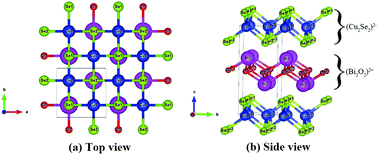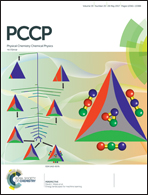Understanding the electronic and phonon transport properties of a thermoelectric material BiCuSeO: a first-principles study
Abstract
Using the first-principles pseudopotential method and Boltzmann transport theory, we give a comprehensive understanding of the electronic and phonon transport properties of the thermoelectric material BiCuSeO. By choosing an appropriate hybrid functional for the exchange–correlation energy, we find that the system is a semiconductor with a direct band gap of ∼0.8 eV, which is quite different from those obtained previously using standard functionals. Detailed analysis of a three-dimensional energy band structure indicates that there is a valley degeneracy of eight around the valence band maximum, which leads to a sharp density of states and is responsible for a large p-type Seebeck coefficient. Moreover, we find that the density of states effective mass is much larger and results in a very low hole mobility for BiCuSeO. On the other hand, we discover two flat phonon branches contributed by the Cu and Se atoms, which can effectively block heat transfer. Combined with large atomic displacement parameters of the Cu atom, we believe that the intrinsically low lattice thermal conductivity in BiCuSeO is mainly caused by the Cu atoms, instead of the prevailingly believed Bi atoms. The thermoelectric figure-of-merit is also predicted and compared with available experimental results.



 Please wait while we load your content...
Please wait while we load your content...